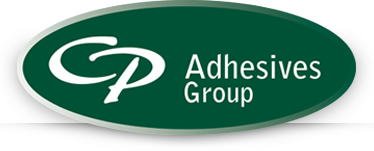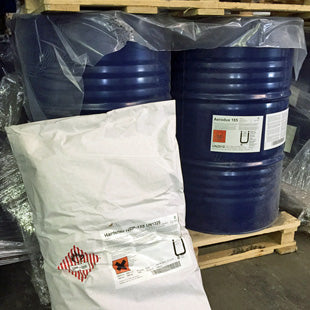Determining VOC Content
 With certain exceptions noted below, the solvents used in coatings, inks, adhesives, and consumer products are classified as volatile organic compounds (VOCs). Although these products include other VOCs besides solvents, solvents generally account for the largest part of their VOC content. Over the last few years, federal and state agencies have set limits on the amount of VOCs that can be used in many of these products. In order to comply with these VOC-content limits, product formulators must understand how the VOC content of a product is determined for regulatory purposes.
With certain exceptions noted below, the solvents used in coatings, inks, adhesives, and consumer products are classified as volatile organic compounds (VOCs). Although these products include other VOCs besides solvents, solvents generally account for the largest part of their VOC content. Over the last few years, federal and state agencies have set limits on the amount of VOCs that can be used in many of these products. In order to comply with these VOC-content limits, product formulators must understand how the VOC content of a product is determined for regulatory purposes.
Emissions of VOCs, in and of themselves, do not necessarily give rise to health or environmental concerns. In many areas, however, they react with oxides of nitrogen (NOx) to form ground-level ozone -- the primary component of urban "smog." There are a small number of solvents that do not contribute to ozone formation and are therefore classified as "VOCexempt." Although only a few solvents are currently classified as VOC-exempt, they can be an important tool for meeting VOC-content limits while still allowing the use of proven solvent systems.
Consumer Products
In September 1998, the U.S. Environmental Protection Agency (EPA) established national VOC-content limits for 24 categories of consumer products, including such things as hairsprays, deodorants, air fresheners, and household cleaners. Although states are allowed to set more stringent limits on consumer products sold within their borders, California is the only state that has done so as of this date.
VOC-content limits for consumer products are typically set in terms of weightpercent VOCs. Under the federal rule, for example, hairsprays may contain no more than 80 percent VOCs on a weight-percent basis. (The corresponding California limit is 55 percent.) Thus, the ingredients in a hairspray product that are classified as VOCs may not account for more than 80 percent of the weight of the product (or 55 percent for products sold in California). In order to demonstrate compliance with such limits, product manufacturers must keep adequate records of the amounts of constituents used to manufacture their products. Although this can be a substantial burden in terms of recordkeeping, the actual methodology for determining compliance is straightforward.
There are two classes of exempted compounds that generally do not count against VOC-content limits for consumer products: (1) compounds classified as VOC-exempt and (2) low vapor pressure (LVP) compounds.
VOC-Exempt Compounds: The list of compounds that EPA has classified as VOC-exempt is found at 40 C.F.R. § 51.100(s)(1). This section can be found here. It is important to note, however, that each state also has its own list of VOCexempt compounds that will apply in many cases. Although the state lists are generally identical to the EPA list, some states take several years to add compounds that have been newly added to the EPA list. Therefore, a solvent user should be aware of the list that is in effect in his or her state.
LVP Compounds: For most types of consumer products, the LVP cut-off is 0.1 mm Hg at 200 C. Any compound with a vapor pressure less than or equal to the cut-off is not counted against the applicable VOC-content limit. The LVP cut-off limit may be different for certain types of products. Formulators should consult the applicable regulations in order to determine the LVP cut-off that applies to their particular products.

Paints and Coatings
Over the last several years, EPA and several states have also issued regulations that establish VOC-content limits for many types of paints and coatings. There are three important differences between such limits and the VOC-content limits that apply to consumer products.
Use of Thinner or Reducer: If the producer of a coating recommends that a thinner or reducer be added by the end user, then the recommended amount of thinner or reducer counts against the applicable VOCcontent limit.
No LVP Exemption: Under current law, there is no explicit LVP exemption for compounds used in paints and coatings.1 As a result, some compounds are regulated as VOCs when used in coatings, but not when used in consumer products.
Methods for Determining Compliance: The methodology for determining compliance with paint and coating limits is somewhat more complex than the method used for consumer products. This issue is discussed below.
Under current regulations, there are two ways of determining the VOC content of a coating: (1) in pounds (or grams) of VOC per gallon (or liter) of solution minus exempt solvents (including water and VOC-exempt organic compounds); or (2) in pounds of VOC per pound of solids, as applied. These two methods are shown on Table 1.
Regulations specify which approach must be used; formulators are not given the option of choosing between the two methods. For historic reasons, the "per-gallon" approach is more widely used, although the "per-pound-of-solids" method is generally considered a better indicator of a coating's environmental impact because it measures the expected VOC emissions for a given amount of surface area coated to a given film thickness.
There is also an important practical difference in how these two methods treat solvents that are not classified as VOCs, including both VOC-exempt organic solvents and water. Both methods show a reduction in the VOC content of a coating when a VOC-exempt solvent is used in place of other solvents. However, the "per-pound-ofsolids" method more accurately measures the VOC reduction that is achieved from the use of VOC-exempt solvents. The disparity between the two methods results from the requirement that VOC-exempt solvents must be subtracted from both the numerator (pounds) and the denominator (gallons) under the "per-gallon" method, while they are only subtracted from the numerator under the "per-pound-of-solids" method.

Table two compares how the two methods measure the VOC content of a typical lacquer formulation before and after it has been reformulated with a VOCexempt solvent.
As shown in the first column, the original formulation contains 85 percent organic solvent, all of which is VOC. A case study showed that such a coating may be reformulated to contain 40 percent VOC-exempt solvent (in this case acetone) by weight, as long as the user takes into account acetone's lower flash point to ensure safe use and handling, as well as the potential for resin or humidity blush during application. The reformulated coating is shown in the second column. Note that, because acetone is a very active solvent, the reformulated coating would actually have a higher solids content than the original formulation and still maintain the same viscocity. Because of the higher solids content, it would contain less overall solvent--approximately 81 pounds versus 85 in the original coating.
As shown in the table, the pergallon method does show a decrease (from 6.39 to 5.90, or about 8%) in the VOC content of the reformulated coating, but this is due mostly to the increase in solids content. This method seriously understates the actual VOC reduction impact of using a solvent that is not considered to be VOC-- regardless of whether it is water or a VOC-exempt organic solvent such as acetone. The applicator is not concerned with applying a certain number of gallons of coating to the substrate, but instead applies sufficient solids to achieve the desired film thickness. Thus, the 55% decrease (from 5.70 to 2.58) in VOC content calculated by the "per-pound-ofsolids" method reflects the actual reduction in VOC emissions obtained by using a VOC-exempt solvent.
Although the "per-pound-ofsolids" method is a better indicator of the true environmental impact of a coating, many current regulations continue to require VOC content to be measured in pounds of VOC per gallon of coating. Product formulators should be aware of this important distinction and may want to encourage regulatory officials to adopt the per-pound-of-solids approach as they develop new standards for paints and coatings in the future.

Solvents Council
The Solvents Council serves as a forum for addressing health, safety, and environmental issues that affect producers, distributors, and users of hydrocarbon and oxygenated organic solvents. For more information about this bulletin or the Council, please contact Barbara O. Francis, Manager of the Solvents Council at 703/741-5609.
Legal Notice
The information contained in this article is offered in good faith and believed to be accurate and reliable as of the date of publication. However, neither CMA nor the Solvents Council assumes any liability resulting from the use of, or reliance upon the information provided in this brochure. All persons involved in handling, storing, or using solvents have an independent obligation to ascertain that their actions are in compliance with current federal, state, and local laws and regulations, and should consult with legal counsel concerning such matters.
1 As a general rule, formulation records are used to demonstrate compliance with paint and coatings regulations. However, there is also a specific test method, known as Test Method 24, that can be used to measure the VOC content of a coating for compliance and enforcement purposes. See CFR part 60, appendix A. Method 24 may not "pick up" certain low vapor pressure compounds and, therefore, may exclude them from regulation as a practical matter. However, there is no definitive list of LVP compounds that are not captured by Method 24. To the extent that it captures VOC-exempt compounds, such compounds are backed out of the Method 24 result. ASTM offers training courses on using Test Method 24 to determine the VOC content of paints and coatings.
- Choosing a selection results in a full page refresh.
- Press the space key then arrow keys to make a selection.













